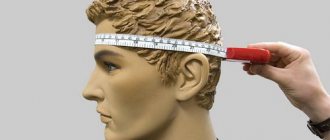Thanks to a felt hat, a sensitive person can visit baths and saunas without harm to their health. This material perfectly protects the head from overheating. Few people know that felt bath hats need to be washed in the same way as towels, bathrobes and other bath accessories. There are a few simple rules for caring for this accessory.
Dry cleaning
First of all, the degree and quality of contamination should be assessed. If they are insignificant and you just want to update the product, give it a fresh look, then dry cleaning (including with soapy water) may be quite sufficient. This operation is performed using a dry or wet bristle brush, sponge, napkin, rag. During this manual operation, the felt is cleaned very delicately, its structure is not affected, but at the same time surface dirt is well removed, the top layer is slightly fluffed, and thus the appearance and color of the product are refreshed.
Dry cleaning may also be required as a preliminary step before washing if the felt has severe local dirt or stains left, for example, by dripping oil, cosmetics, or soot from touching the parts of a wood-burning stove. In this case, you will have to use soaking with preliminary application of detergent to a specific area or use a stain remover for wool, and only then send the product for washing.
Recovery after shrinkage or stretching
Technically, once a hat has stretched or shrunk, it cannot be repaired. But you can loosen the fibers of the fabric, which will help return it to its original shape.
Some people wash their hats to make them shrink in hot water followed by vigorous wringing. The products become small, but at the same time they are damaged. Therefore, there is no need to exceed the recommended washing temperature.
Items made from acrylic, cotton, wool (including angora) or cashmere stretch or shrink better than items made from other materials. This is due to the “thinner” fiber mesh. To restore the original size, fill a basin with warm water, add a little shampoo or conditioner (about 1 tbsp per 1 liter), stir. Wet the item for half an hour. Rinse. Squeeze between towels. Place on a dry towel, shape, and leave to dry.
A good option for how to wash a white hat and at the same time return it to its original shape is to add vinegar to the water. Leave the headdress soaked for 30 minutes, rinse, and wring out between towels. Dry as above. A stronger vinegar solution is also recommended when washing items with head lice or after lice (a common problem for children when visiting children's groups).
Author's rating
Author of the article
Natalia
Large cleanings are fraught with unexpected finds.
Articles written
199
General washing rules
If it is obvious that you cannot do without washing, then there are two options: hand washing and machine washing. The general rule in both cases will be a strictly defined water temperature - in the range of 30-40 ° C. In colder water, the product simply will not wash, but if the upper threshold is exceeded, you risk ruining the product: the felt may become deformed and it will be difficult or even impossible to fix. In general, washing felt should be approached in a similar way to washing woolen products. Also avoid soaking the felt for a long time, this will not have the best effect on its condition. Finally, items with various embellishments, fine trimmings, embroidery, and appliqués should only be washed by hand.
Detergents
As for detergents, products containing lanolin are suitable for felt. This can be lanolin soap (for hand washing), as well as a special gel or shampoo for delicate washing. All kinds of granular products containing aggressive components can irreparably damage felt.
Before hand washing, soap or other detergent must be thoroughly stirred. A felt item can be soaked in prepared water for a short time and then washed, avoiding strong friction and creasing. If necessary, you can use a brush with medium-hard natural bristles.
Machine wash felt only in the “Wool/Delicate Wash/Hand Wash” modes; anything else will lead to matting or deformation of the felt product. It is strictly unacceptable to use a machine spin, so this option should be immediately disabled when setting up modes.
A little trick
Since acrylic is a completely synthetic thread, it is advisable to add an antistatic agent to the water during the last rinse. This way the clothes will not be electrified, which will make wearing more comfortable.
Also, to prevent pilling from appearing on knitwear, which very often happens with synthetic fabric, it is necessary to add a softening agent when washing.
Although caring for acrylic knitted products is quite simple, it is still necessary to strictly follow some recommendations. If you are not put off by the need to wash such items with certain restrictions and dry them only horizontally, feel free to buy yourself wearable, practical and beautiful clothes made from acrylic thread.
Spin and dry
You can only wring out the felt with your hands. The wet item should be placed on a fabric folded in several layers that absorbs moisture well (for example, a terry or waffle towel), and squeezed out with your hands using simple pressing movements, without applying much force. Felt cannot be twisted, folded or folded.
Before drying, flat items such as a rug or a sunbed can be stretched a little with your hands and left in that position on a flat surface.
It is also advisable to straighten bulky items, in which case they will better retain their shape. The slippers can be put directly on the foot and carefully, so as not to wrinkle, removed from the foot and set to dry. The same method applies to the mitten. To straighten the hat, the best option would be to use a barber's blank, but since not everyone has such a thing at home, the blank can be replaced with an ordinary three-liter glass jar. Drying felt items on a rope or wire rack is extremely undesirable, since marks from clothespins and racks usually remain on the felt, and small deformations and dents appear. Drying is carried out under natural conditions; there is no need to create additional airflow and heating.
Ironing
Typically, felt products do not require ironing, but in some cases, if, for example, it is thin felt or felt that does not have sufficient rigidity to keep its shape well, ironing may be necessary. But here, as with washing, it is important to observe the temperature regime. The most optimal mode will be for ironing wool; as a rule, it is present on all modern irons. Sometimes ironing felt bath accessories is also useful for disinfecting them.
The iron can also come in handy in one more case - if there are creases in the felt. Then it can be steamed in a wet state with an iron, also in the “Wool” mode. This method easily removes wrinkles and creases.
Whitening
Felted wool does not withstand chemical bleaching well. It is extremely undesirable to use aggressive compounds, and especially chlorine, on it. But this does not mean that it will definitely not be possible to return whiteness.
ARTICLE FOR YOU
How to properly wash ribbed items: in the washing machine and by hand
There are several effective remedies suitable for combating yellowness and gray tints:
- potato or corn starch;
- Wheat flour;
- crushed chalk;
- baking soda;
- semolina.
Starch is suitable for combating yellowness.
All of the listed products have absorbent functions. This allows them to be used on a dry surface. To achieve the result, they are simply applied to felt and left for several hours. After a while, the residues are brushed out or vacuumed.
How to care for felted bathhouse caps.
I often receive questions about how to care for a bath cap so that it serves you for a long time, maintaining its size and shape, and gives you a joyful and playful mood? Therefore, I decided to create step-by-step instructions and describe how I do it.
- So, you received the package with a hat, unpacked it. Shake the cap well. You can straighten the individual elements with your fingers. Felted products retain their shape perfectly - they can be crumpled, folded, put in a bag, and then taken out, and the felt will “remember” the shape specified by the master. If possible, place the cap on a horizontal surface for 1 night. Let her “rest” from the long journey.
- Questions often arise about how a hat will behave in a bathhouse - after all, it is humid and hot there. Some buyers are afraid that the cap may shrink. I roll my products very hard and they don’t shrink. But when wet, felt acquires a certain plasticity and can change its shape according to your desire. And the owner’s desire is to keep the product in the form in which it was purchased. While you are enjoying the steam in the steam room, you can be completely calm, because the hat is on your head, and it takes and maintains the shape of your head. Coming out of the steam room, you really want to dive into the pool or take a cool shower! Do not throw the cap away and do not leave it in the steam room to wait for your return - put it in a relatively dry place (put it down or put it on a bench). The same applies to the bath mat if you purchased one. Wool from some brands may stain when wet or wet (not all colors fade, but sometimes this happens), so after use, do not put a cap or bath mat with wet towels and a swimsuit in the same bag. Place them in different bags.
- “They brought him home, he turned out to be alive. “So you enjoyed the bathhouse, became healthier, rejuvenated, received a charge of vigor and good mood, and returned home. And the hat came with you this way, folded in a bag, in a bag. And here we return to the moment of purchase: take out the cap and shake it. Even if you handled it very carefully in the bathhouse, the cap is still a little wet (after all, you put it on wet hair too), so put it on your head, straighten the decorative elements, fields, petals with your hands and place it on a horizontal surface on overnight or for a day - until completely dry. After this, the dry cap can be put in a bag and put away until your next visit to the bathhouse. Do not dry felted items near heating appliances.
- If there is a need to wash a hat, this is possible. I do not recommend washing by hand; it is better to use a washing machine. Place the hat in the machine, possibly together with the rug (if you also purchased one), and do not place any other woolen items. Add wool detergent and fabric softener as desired. Set the machine to a program for washing wool and silk, temperature 30 degrees, spin no more than 400 revolutions (with more revolutions, the product may decrease in size). Do not turn off the spin, otherwise you will have to wring out the product yourself, but you cannot twist it. The machine itself will do everything as it should if you have set the correct mode. After you take it out of the machine, we return to step 3 - put the hat on your head. If you don’t want to wear a wet hat, you can first put a plastic bag on your head and a hat on top. Spread the decorative elements, fields, leaves, petals with your hands and place it on a horizontal surface for a day until it dries completely. A wet bath mat can be ironed with steam on both sides, and then placed on a horizontal surface until it dries completely.
Requirements for headgear
It is difficult to imagine carrying out steaming or bathing procedures without a bath cap. But before you make a future purchase, you need to study the basic requirements for a headdress:
- Protection. It reliably protects the head from overheating and burns, prevents hair from becoming brittle and the development of pathogenic bacteria on the skin.
- Safety. The product helps preserve human health through the use of natural materials for its sewing.
- Convenience and practicality. A high-quality product reliably retains its shape, does not change color or volume after washing, and dries quickly. It should also provide comfort and ease of use and fully correspond to the circumference of the head.
- Attractive appearance. The headdress can have a classic or original design, but in any case it should provide aesthetic pleasure when worn.
When choosing a bath cap, it is recommended to take into account the shape, size and material from which it is made.
Is it possible to wash bath caps?
Someone after the bath puts the hat on the shelf until the next steam room, and so on for years. Someone, on the contrary, always washes it in a machine at 800 rpm at 60 degrees. These are the first two mistakes in caring for a bath cap, and both are equally harmful. Why?
Is it possible to wash bath caps?
You can, but very carefully! Hot water makes all natural fabrics “shrink” - linen, cotton, and felt. Especially in the case when they are also twisted or rubbed hard. After this, the bath hat will be tight and tight. This is, firstly, inconvenient, and secondly, harmful: a tight hat protects the head worse, because there is no longer an air gap between it and the hair.
Hot washing is generally contraindicated for felt: it fades and becomes covered in pellets. It can only be washed by hand: in warm soapy water at a temperature of 30-35°C.
If you don’t wash the hat at all, it will lose its shape and very quickly become like an ugly rag. Accordingly, the protective properties will not improve from this either.
The gold standard for hat care
Every 2-3 visits to the bathhouse, wash the cap by hand. The water should be moderately warm, but not hot - no more than 40°C. This applies to linen, cotton, and felt.
After washing, the hat is wrung out, but not twisted. Fabrics for bath accessories take any shape well when soaked in water. After a rough squeeze, the hat will stretch and wrinkle, and this, again, is inconvenient and ugly. The more carefully you wring it out, the longer the fabric will retain its structure and the better it will protect you from overheating.
The third main mistake after visiting the bathhouse
The bath hat should dry in the position in which it is worn. If you just hang it on the dryer, it will be an ugly flat rag. If you put it on a hot radiator, it will also shrink.
The easiest way to shape a wet hat is to put it on your head immediately after washing. Naturally, you don’t need to dry it on yourself - just straighten it out. The hat in the shape of a cap or bell can then be removed and placed to dry on any flat surface.
If you want the hat to take its exact shape and hold it for a long time, take an object that resembles a head. A vase or flower pot will do just fine. You can even inflate a balloon. Most often, hats with long brims or drooping ears are dried this way.
Straighten the hat on your head; if it does sit down, stretch it a little. Then put it on the “mannequin” and leave it until completely dry.
How to wash felt items: in the washing machine and by hand
Humanity learned to make felt between the 5th and 6th centuries BC. Around this time, sheep were domesticated, the wool from which it is made.
In the modern world, products made of dense, warm material are widely used. Felt, a type of felt, is used to sew outerwear, accessories and bags. Caring for them requires compliance with certain rules. Cleaning, drying and storage of the material must be appropriate to its characteristics.
Bath hat: why you can’t do without it and which one to choose
Professional bath attendants never tire of reminding people of the need to use hats during health procedures. This fact raises a number of questions among ordinary people.
Read in the article
Functions
The hat is strongly associated with the function of protection from the cold. It doesn't seem logical to wear it in a hot place. Ancestors did not use any hats in the bathhouse. In extreme cases, you can cover your hair with a towel. These are just some of the arguments that clients give in an attempt to abandon the attribute.











